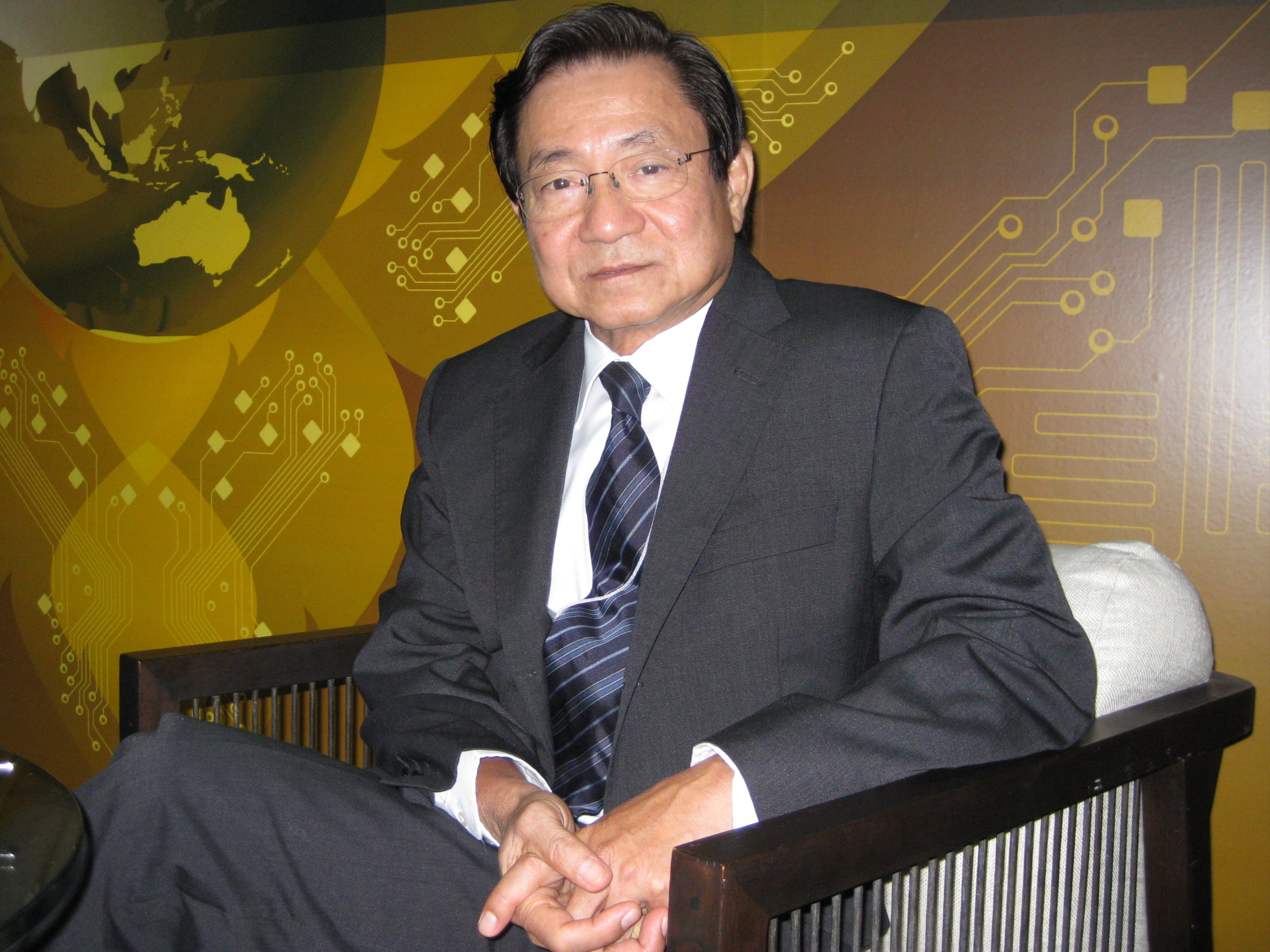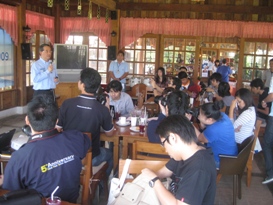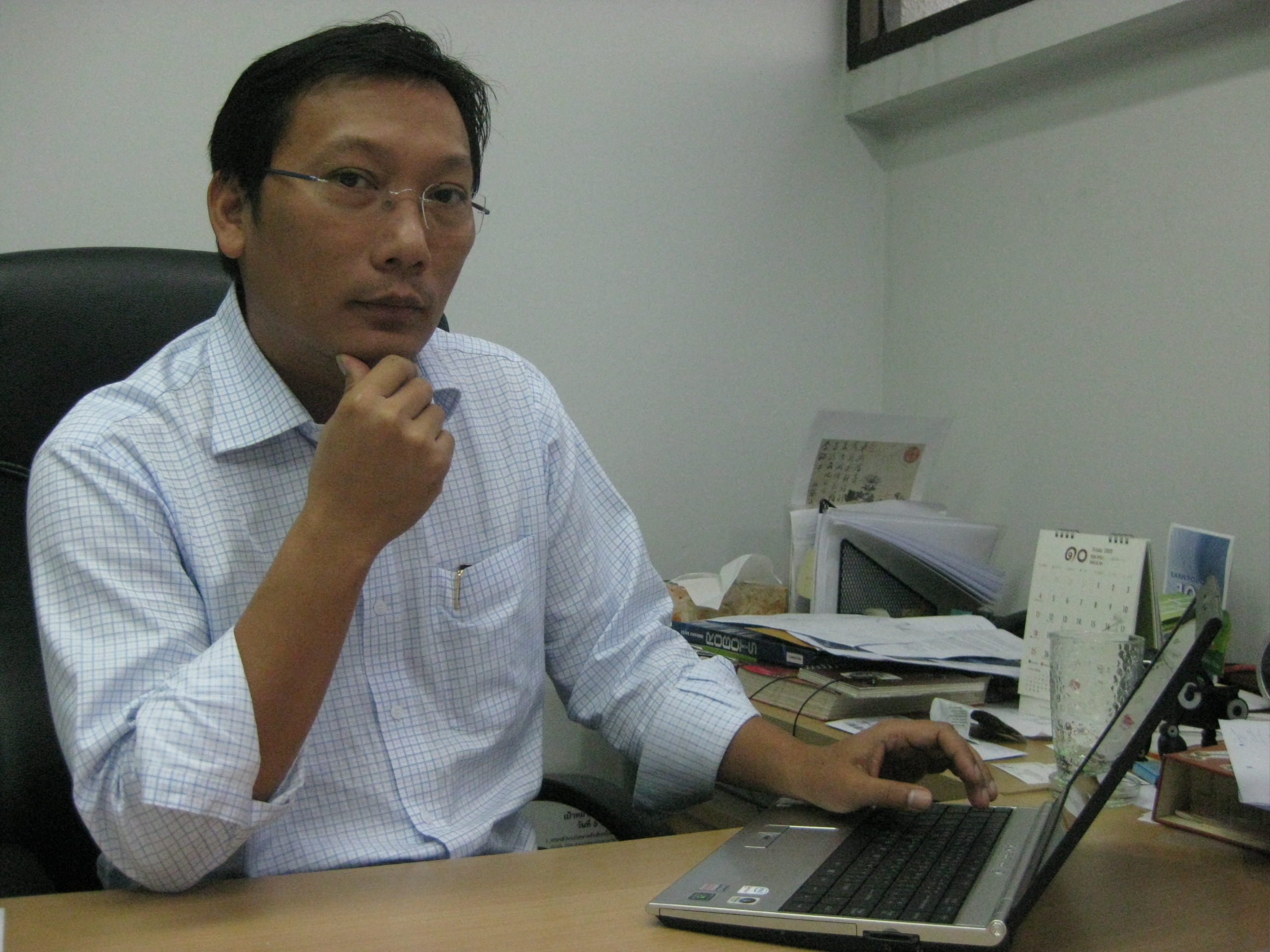Even though the software industry has been established in the country for more than a decade and there has been attempts to drive software to become one of the flagship industry that expected to generate significant revenue to the country economic, but currently, it seems this industry still not reach its mission and it going far away from being in the world software map.
Software is an engine of economic growth. To help promote economic growth, the country’s policy makers have to determine policies to encourage the commercial software industry. Manoo Ordeedolchest, chairman of the Board, Software Park Thailand and former president of Software Industry Promotion Agency (Sipa), said that the government policy should assist building local software industry to persuade the global investment including provision of facilities, immigration and work permit, human resource development, and promotion package.

Manoo Ordeedolchest- Chairman of the Board, Software Park Thailand and Former President of Software Industry Promotion Agency (Sipa)
If Thailand wants to become the destination of software development, the government should provide the park facilities to welcome software companies to come in and have a place to settle down business in the country. Currently, the only facility is the Software Park located in Bangkok. It is not yet expanding to the region of the country, unless the private’s attempts to build the private software park in the north in Chiang Mai – Chiang Mai Software Technology and Outsourcing Centre – and in the south in Phuket – Software Park Phuket.
Moreover, the regulation around the immigration and work permit are also the important factors, because software industry is knowledge business requires the experts from abroad to come and work in the country. Therefore, the immigration and work permit processes should be more convenient for them. Even though, there has been effort to provide such this service, but it is still in the policy level, but it is not practical when is in the operation level.
“This point, the neighborhood countries are doing better than us. For Thailand, there is one-stop-service facilitate the oversea people at the first time, but when they need to renew their work permit or visa they have to show up this is quite not convenient for the foreign executive,” said Manoo.
Human resource…important capital:
Software is the knowledge-based industry, so human recourse development is also another key point for the government concern in helping strengthen local software industry. There is unclear which organization to oversee the human resource development for software industry and where the money for this task. It seems there are organizations who take care of this matter, both the Software Industry Promotion Agency (Sipa) and the Ministry of Education, but there is vacuum situation in software human resource development.
“Software is young industry that requires a lot of government support. If there is not enough action in support and encouragement for software industry from the government, it is too difficult to drive software industry to become the industry significant to the country economic and difficult to persuade the big foreign investment like Intel, IBM, and Microsoft that have invested in our neighborhood countries like Vietnam and Malaysia,” said Manoo.
Promotion package needed:
Also, the government’s promotion packages for software industry also play an important role. At the present, it seems the promotion package is not attractive enough and it seems only Board of Investment (BoI) responsible for this stuff. The government should develop more promotion packages coming up with not only in numbers but in quality of packages.
“If compare the government’s promotion package among four counties including China, Vietnam, Malaysia, and Thailand. Thailand is ranked in the forth. These countries realized that foreign investment brings investments, jobs, and technology transfers to their countries. Thailand’s distinguish promotion package is only BoI’s that provides company to wave the company’s income tax for eight years,” said Manoo.
BoI has been active in providing its support and promotion package. As a result, there have been around 30 to 40 foreign software companies come in Thailand per year, but it is too small number and most of them are small business therefore it is not significant impact to drive the entire software industry as a whole and it also is not impact tot the country’s economy as well.
Manoo recommended that the priority is to develop the retraining programs. As around 80 per cent of total 40,000 programmers are familiar with the traditional technologies that more costly than using the new software technologies, which reduces cost of software usage to more than 50 per cent.
Cost of retraining one programmer is around Bt200,000. Therefore, in order to help local software companies to get improve their software people the government should help them easily access the sources of funds.
“Angle fund is a must for building up the country’s software industry. It is so difficult to execute this in Thailand but we need to change point of view on this free condition of fund. If around 50 projects received angle fund were success and other 50 per cent were failure, it is success in term of angle fund initiative because even only 50 per cent success but these 50 per cent will create job opportunities for more other people,” said Manoo.
He insisted that if there is not action in these areas, Thailand will not on the world software map for sure. Thailand’s software industry will not reach its goal but just become only family-based-industry and will be not significant to the country’s economic.
However, at the present, the paradigm shift in software technology will help open more opportunities for Thailand’s software industry, he said. The software paradigm shift helps Thai software houses to have more chances to develop their niche software with less cost and shorter of time. There are three main important technologies included service oriented architecture (SOA), web2.0, and open source technology.
“Challenge is that how we can retrain our people on these new paradigms of software development effectively,” said Manoo.
Smart Thailand…key driver:
There is a good sign from the country’s second ICT master plan – for 2009 to 2013 that aims to turn the country become ‘Smart Thailand’ equipped with ‘Smart People’ and a ‘Smart Government’, under the plan, the first strategy – the Information Literacy strategy – will focus on human-resource development.
Moreover, it is to improve the country’s ICT readiness so it is better positioned on the world stage and to increase the contribution of the ICT industry to the country’s gross domestic product (GDP) to 20 per cent. It also will encourage Thailand’s export of niche software, increasing its contribution to about 30 per cent of the total software revenue.
By the end of 2013, ICT industry special focus on the software industry will become a major income generator for the country with the software industry’s worth of Bt150 billion, of which about 50 per cent would come from local software development.
View :1977




Recent Comments